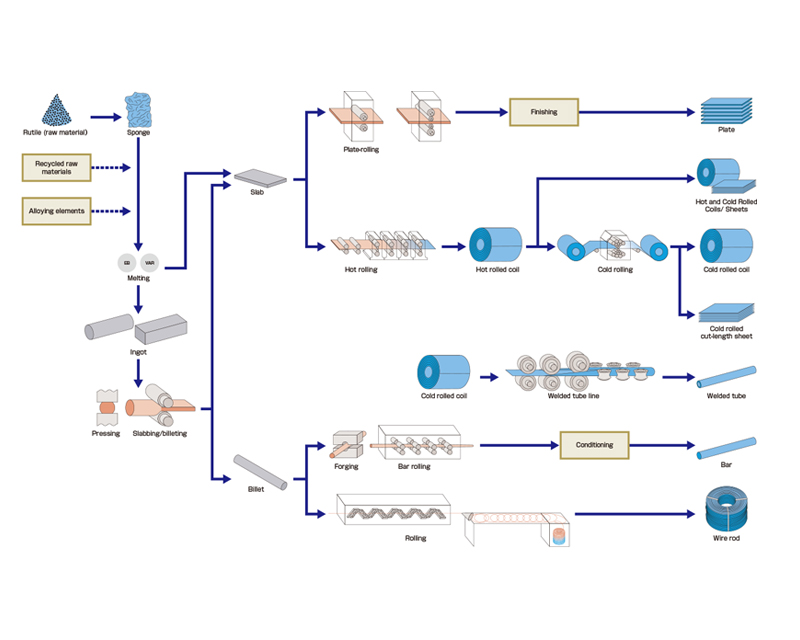
The term ‘titanium’ immediately conjures up images of strength and durability. And, thanks to the recent resurgence in popularity of the metal, people are now more aware than ever before of its impressive properties. In addition, since it’s regarded as being practically indestructible, it’s also a material that has become increasingly sought after by both manufacturers and consumers. But while you may already be familiar with some of titanium’s key benefits and uses in various industries, we think you’ll find the information below on how to titanium etching intriguing. Read on to discover everything you need to know about this innovative metal treatment technique…
Titanium etching is a metal treatment technique that involves the application of an acid solution to the surface of a titanium product, followed by the subsequent use of a ferrous-ion-based electrolytic current. This procedure leads to an etched surface layer that’s applied to the product’s surface. The etched surface layer can be used for a number of different applications, including corrosion protection, decorative applications, and functional uses. As you can see from the above explanation, this technique allows you to add a range of surface treatments to your titanium products, including etching, plating, and coloring. It’s also important to note that the etching process is typically only applied to metals that are compatible with acids, such as titanium.
There are a number of commercial applications that benefit from titanium etching. In particular, titanium etching is most commonly used in sectors like the food, pharmaceutical, and medical industries. Here’s a breakdown of some of the most common uses of titanium etching: - Corrosion protection: One of the most obvious applications for titanium etching is corrosion protection. An etched surface layer can be used to prevent the formation of harmful corrosion on the surface of titanium products, such as medical equipment. - Decorative finishes: Another common application for titanium etching is decorative finishes, such as coloring. With this treatment method, you can apply a range of different colors to the surface of titanium products, such as medical instruments. - Functional finishes: You can also apply various functional finishes to titanium products via titanium etching. For example, you can use the etched surface layer to improve a product’s grip.
Titanium etching isn’t a do-it-yourself procedure, so you’ll need to use a professional etching company. The first step in the process is to prepare the titanium product by removing any contamination and thoroughly cleaning the surface. This is done using a combination of water, acid, and/or solvents, depending on the type of titanium etching that you want to do. The next step is to apply a masking tape to the edges of the product that you don’t want to be etched, followed by the application of a ferrous-ion-based electrolytic current to the surface of the product. This current electrochemically etches the surface of the titanium product, creating a porous etched surface layer.
There are many benefits associated with the application of a titanium etching treatment. These include: - Durability: One of the main advantages of titanium etching is its durability. While the etched surface layer wears over time, it’s resistant to corrosion and abrasion, meaning it’s likely to last longer than uncoated titanium. This makes it suitable for a wide range of commercial applications, including medical and food processing equipment. - Improved aesthetics: Another advantage of titanium etching is that it can be used to improve the aesthetics of a product. You can use the etched surface layer to apply a range of different finishes, including coloring, plating, and texture. - Improved functionality: You can also use titanium etching to improve a product’s functionality. This can be done by applying various functional finishes, such as sticky, tacky, or smooth surfaces.
While titanium etching offers many advantages, there are some limitations associated with this treatment method. These include: - Wear and tear: One limitation of titanium etching is that the etched surface layer wears over time, which results in the product losing its protective properties. This means that the product will need to be re-etched after a certain period of time. - Additional costs: Since the re-etching of a product is likely to be required after a certain period of time, there may be additional costs associated with the treatment. - Risk of corrosion: Another potential limitation of titanium etching is the risk of corrosion if the wrong process is used. This can be combated by selecting the correct process for your product.
If you’re in the market for a company that performs titanium etching, you’ll want to make sure that you find a reputable business. This can be challenging, particularly in a sector like metal etching, where there’s a lot of competition. But, there are a few things that you can do to make sure you find a reputable business, such as: - Conducting thorough research: The first thing that you should do is conduct thorough research to find out what each company has to offer. This will help you to determine which company best meets your needs. - Use online reviews: Once you’ve identified a few companies that meet your requirements, you should use online reviews to get an idea of how others feel about those businesses. - Find referrals: You can also use referrals to find reputable businesses.
Titanium etching is an innovative metal treatment technique that provides a range of benefits, including corrosion protection, improved aesthetics, and improved functionality. While the etched surface layer wears over time, it can be re-etched as required, meaning that it’s likely to last longer than uncoated titanium. If you’re in the market for a company that performs titanium etching, you’ll want to make sure that you find a reputable business.
